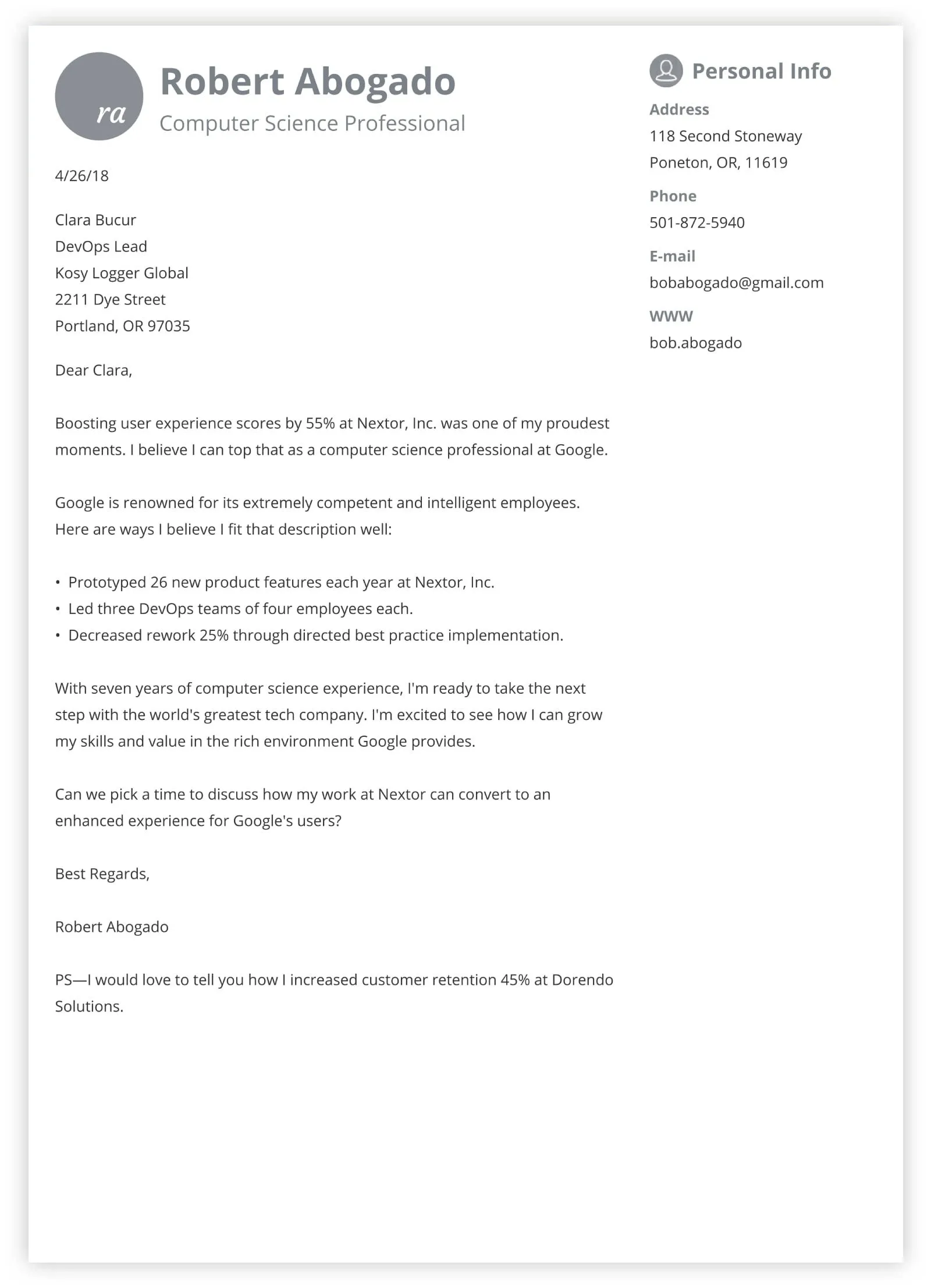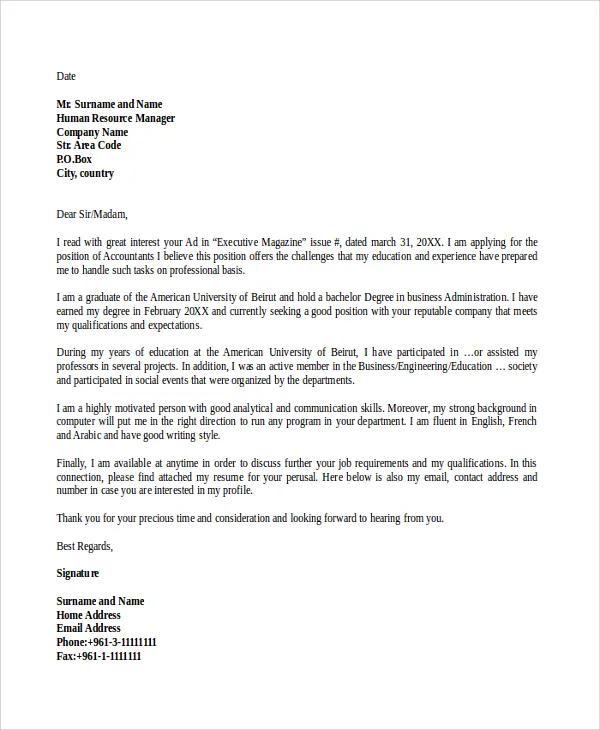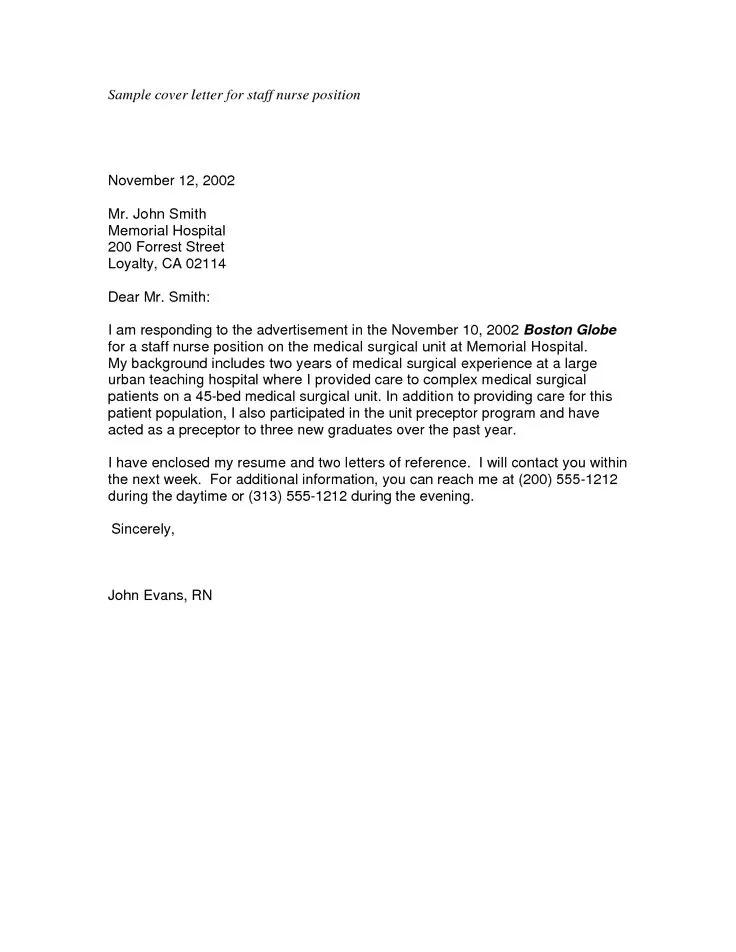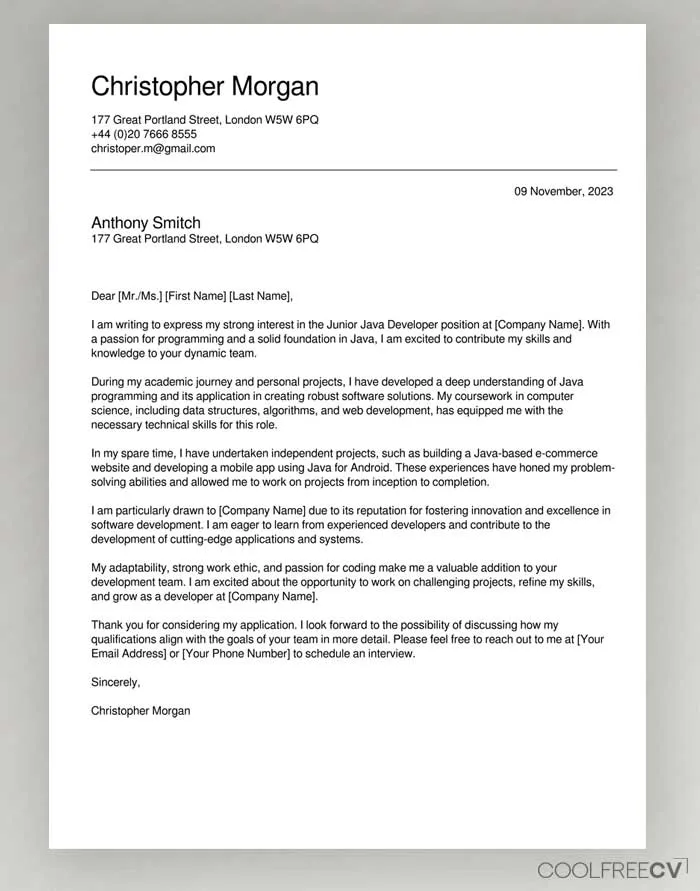Understanding the Importance of a Cover Letter
In the competitive world of job applications, a cover letter serves as your personal introduction, giving you the chance to present yourself as more than just a list of qualifications. It is your first opportunity to make a strong impression and set yourself apart from other candidates. A well-crafted cover letter showcases your personality, writing skills, and genuine interest in the role and the company. It also provides a platform to explain any gaps in your resume, highlight specific achievements, and express your unique value proposition, essentially painting a vivid picture of how you can contribute to the organization’s success. Failing to include a cover letter, or submitting a poorly written one, is a missed opportunity to convince the hiring manager that you are the best fit for the job.
What a Cover Letter Does
A cover letter serves several critical purposes in the job application process. First, it introduces you to the hiring manager and provides context for your resume, allowing you to elaborate on experiences and skills. It demonstrates your communication skills, including writing ability, tone, and ability to organize thoughts coherently. Additionally, it offers a space to express your enthusiasm for the specific role and the company, which can significantly impact the hiring manager. Furthermore, it provides an opportunity to address any potential concerns, like career changes or gaps in employment, and highlight how you bring value to the table. Therefore, a cover letter isn’t simply a formality; it is a strategic tool for a candidate to establish their suitability, demonstrate their passion, and leave a lasting impression.
Why Cover Letters Matter

Cover letters matter because they give you a voice, allowing you to communicate your narrative beyond the dry facts of a resume. Hiring managers often read cover letters closely to gauge a candidate’s fit for the company culture and the specific requirements of the role. A compelling cover letter shows that you have taken the time to research the company, understand the job description, and articulate why you are an excellent match. It demonstrates that you possess not only the necessary skills but also the right attitude and a sincere desire to contribute. This proactive approach can significantly improve your chances of getting an interview, as it indicates that you are genuinely interested and have a strong understanding of the opportunity.
Job Cover Letter Tips Top 5
Highlighting Your Skills
When writing your cover letter, make sure to highlight the key skills that directly align with the job description. Review the requirements carefully and identify the skills and qualifications the employer is seeking. Use specific examples from your past experiences to demonstrate how you have used these skills effectively. Instead of just listing your abilities, provide context by explaining the situation, the actions you took, and the positive results you achieved. Tailor your approach, showcasing how your specific skill set aligns with the employer’s needs, showing your proficiency in the areas that matter most. This approach not only shows your capabilities but also illustrates your understanding of the role’s demands and your suitability for the position.
Quantifying Achievements

Use quantifiable achievements to demonstrate your impact in previous roles. Instead of making vague claims, use numbers, percentages, or data points to illustrate your accomplishments. For example, instead of stating ‘Improved sales,’ you could say ‘Increased sales by 15% in the first quarter.’ Use action verbs and provide a clear context for your achievements to help the hiring manager understand the value you bring. This method transforms your resume into a data-driven showcase of your performance, making a strong case for your capabilities and creating a compelling picture of your professional competence. Adding concrete data makes your achievements more believable and demonstrates that you are results-oriented.
Tailoring to the Job
Avoid sending a generic cover letter. Take the time to tailor each cover letter to the specific job you are applying for. Carefully review the job description, research the company, and customize your letter to show that you understand the role’s requirements and the company’s values. Address the hiring manager by name, when possible, and reference specific aspects of the job that resonate with your skills and experience. This personalization shows your genuine interest and effort and can help you stand out from other applicants. Make sure to use the same keywords and phrases that the company uses in the job description to improve your application’s chances of getting noticed.
Proofreading and Formatting
Meticulous proofreading and formatting are essential. Ensure your cover letter is free of typos, grammatical errors, and formatting inconsistencies. These errors can create a negative first impression and undermine your credibility. Use a clear, professional font, and maintain consistent formatting throughout the document. Pay attention to the layout, including margins, spacing, and bullet points, to make the letter easy to read and visually appealing. Always proofread carefully and have someone else review your letter before submitting it. A polished cover letter shows that you pay attention to detail and are committed to producing high-quality work.
Show Enthusiasm

Expressing enthusiasm for the opportunity can be an effective way to make a positive impression. Show your genuine interest in the role and the company by conveying excitement about the prospect of contributing to the team. Mention specific aspects of the job or company that excite you and explain why you are particularly interested in the position. Show you have researched the company and understand their mission, values, and recent achievements. A genuine and enthusiastic tone can set you apart and make the hiring manager more likely to see you as a potential fit for the company culture.
Cover Letter Writing Best Practices
Formatting and Structure
A well-structured cover letter helps present your information in a clear and organized way. Start with a professional header that includes your contact information and the date. Address the hiring manager by name, if possible. Use concise paragraphs to convey your points, with a clear opening, body, and conclusion. Keep your letter to one page and use a readable font with appropriate spacing. Structure your letter to grab the reader’s attention from the start and guide them through your qualifications, skills, and reasons for applying. By prioritizing a straightforward layout, you demonstrate your ability to communicate clearly and efficiently.
Language and Tone

The language and tone should reflect professionalism and confidence. Use clear, concise language, and avoid jargon or overly complicated phrasing. Adopt a positive and enthusiastic tone, demonstrating your excitement about the opportunity. Tailor your tone to match the company’s culture and industry standards. Proofread carefully to ensure your writing is free of grammatical errors and typos, which can negatively impact your credibility. Ensure the tone of your cover letter is appropriate for the job and organization you are applying to. This can make all the difference.
Common Cover Letter Mistakes to Avoid
Generic Content
Avoid using a generic cover letter that can be applied to any job. Hiring managers can easily identify these templates, and they are less likely to make a positive impression. Personalize your letter for each application, showing that you have researched the company and understand the specific requirements of the role. Highlight your relevant skills and experience in the context of the job description. Generic content suggests a lack of genuine interest and can diminish your chances of getting an interview. Tailoring is critical to demonstrating your value and increasing your chances of success.
Typos and Grammatical Errors

Typos and grammatical errors in your cover letter reflect poorly on your attention to detail and communication skills. Before submitting your letter, carefully proofread it to catch any mistakes. Consider using spell-check and grammar-check tools to aid in this process, but don’t rely on them completely. Have someone else review your letter as well, as a fresh pair of eyes can often spot errors that you may have missed. A cover letter riddled with errors suggests carelessness and can cause you to be overlooked.
Lack of Personalization
Failing to personalize your cover letter is a common mistake. A generic letter gives the impression that you are not genuinely interested in the job or the company. Take the time to research the company, learn about the role, and tailor your letter to reflect your understanding and enthusiasm. Address the hiring manager by name, when possible, and mention specific aspects of the company or role that resonate with you. Personalization demonstrates your commitment and increases your chances of making a strong first impression. Make the hiring manager feel they are important to you.
Conclusion
A well-crafted cover letter is a crucial part of any successful job application. By understanding its purpose, following the tips provided, and avoiding common pitfalls, you can create a cover letter that effectively showcases your skills, experience, and enthusiasm. Remember to tailor your letter to each job, highlight your achievements with concrete examples, and express your genuine interest in the opportunity. A strong cover letter significantly increases your chances of securing an interview and ultimately landing the job. So, put in the effort, and watch your career prospects grow.
